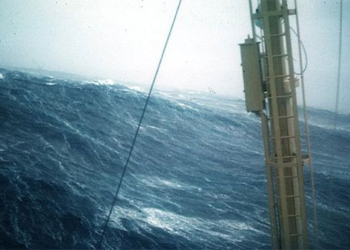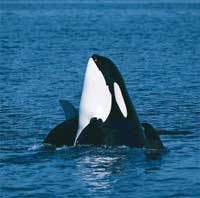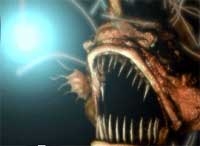Glaucus atlanticus, also known as the blue sea dragon, sea slug, or blue angel, is a small marine snail belonging to the family Glaucidae. This species is found in temperate and tropical waters worldwide.
The blue sea dragon (Glaucus atlanticus) is a type of mollusk known as a sea slug. Despite its impressive appearance, this creature rarely exceeds three centimeters in length. It can be found drifting on the surface of the Atlantic, Pacific, and Indian Oceans in temperate and tropical marine areas.
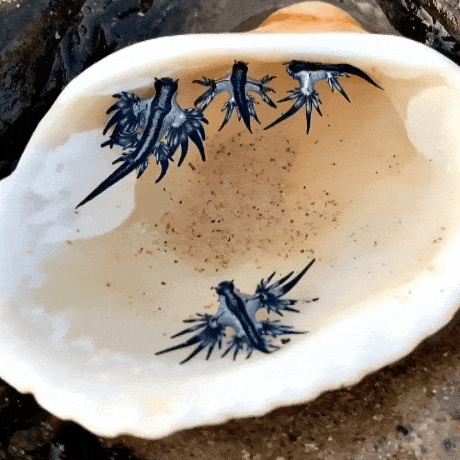
Glaucus atlanticus feeding on highly venomous siphonophores.
Unlike other sea slugs that feed on sponges and corals, Glaucus atlanticus preys on highly venomous siphonophores. Using small tentacles located in its mouth, the blue sea dragon attaches to its prey and can consume it. This sea slug exhibits a blue or blue-green color with black and white stripes. Their vibrant colors help them camouflage in their habitat and warn enemies of their toxicity.
The blue sea dragon lives on the ocean’s surface, using air bubbles in its stomach and the surface tension of water to float. The creature’s coloration serves a practical purpose. Its blue-green side faces upward to blend in with the ocean’s surface, while its silver side faces downward to blend into the lighter surface of the water.
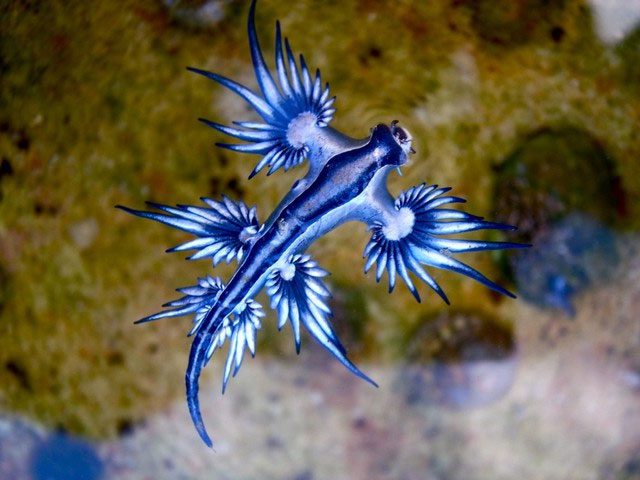
The blue sea dragon has a soft, long, and narrow body. Its short legs have pointed toes, enabling it to cling to surfaces. This creature possesses a set of small, sharp teeth used for feeding on prey.
In addition to its camouflage ability, the blue sea dragon has a rather potent defense mechanism. Although the slug itself is not venomous, it stores toxins produced by the organisms it consumes, including venomous siphonophores and Portuguese man o’ wars. These concentrated toxins can be released upon contact, delivering a “punch” even stronger than the original venom from its prey.
The mating process of the blue sea dragon is also fascinating. As hermaphrodites, each individual possesses both male and female reproductive organs. After mating, the blue sea dragon lays a clutch of up to 16 eggs. They prefer to lay their eggs on floating scraps of food or something buoyant, allowing the hatchlings to float independently once they emerge. The eggs hatch within a few days.
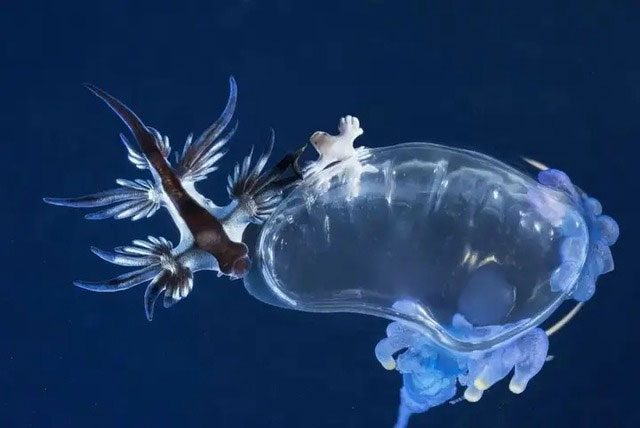
The blue sea dragon is a carnivorous animal, primarily preying on hydra, siphonophores, and other small creatures. They are slow swimmers, often spending most of their time drifting on the water’s surface. Blue sea dragons are hermaphroditic, meaning they can become pregnant and lay eggs. They lay their eggs on a foam buoy, drifting with the current.
The striking blue appearance of the blue sea dragon has led some people to consider keeping them in their home aquariums. However, in practice, finding food for these creatures in pet stores can be quite challenging.
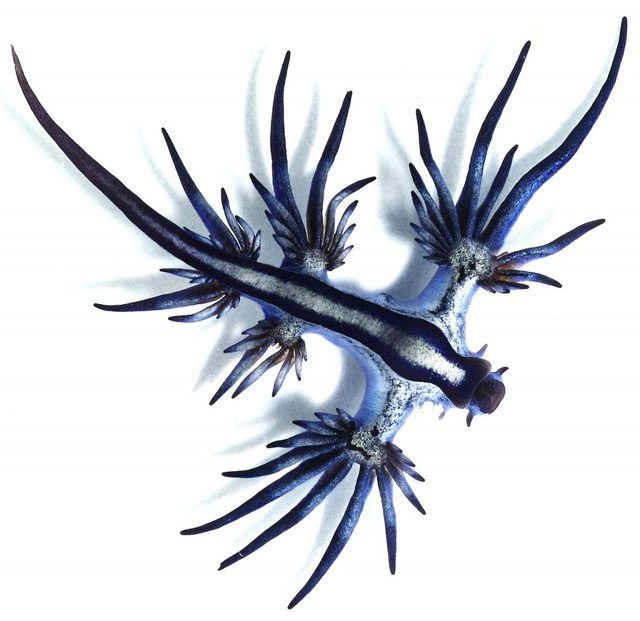
Glaucus atlanticus contains tetrodotoxin (TTX) on its skin, a potent neurotoxin that can be lethal to humans. Even after death, their venom remains potent, and stepping on or picking one up can result in painful stings accompanied by symptoms such as nausea, pain, and vomiting.
Researchers have recently been discovering these small creatures in new locations. This may be due to rising ocean temperatures, coupled with increased storm activity, causing them to drift further or into different coastlines.
Researchers have extended the range of the blue sea dragon further north by over 93 miles into the Gulf of California after fishermen caught them during a fishing expedition in 2015. In 2017, they were spotted in the waters off Taiwan. In May 2020, they surprised boaters at South Padre Island, Texas, and later appeared in Cape Town, South Africa, in November of that year.
Among gastropod species, sea slugs like Glaucus atlanticus are known for having few fossil records. This is due to their soft-bodied structure, lacking bones and shells, making fossilization difficult. In contrast, fossil records have preserved much of the history of shelled gastropod species from the earliest Paleozoic era (541 to 252 million years ago). Among other layers, Gastropoda fossils appeared in the Cambrian period (541 to 485.4 million years ago).
Like most marine animals, the blue sea dragon faces several global challenges to its survival, typically including:
Intraspecific predation: This sea slug will not hesitate to consume other blue specimens when the opportunity arises.
Climate change: Global warming and ocean acidification are becoming additional threats to their survival.
Human threats: The widespread use of the internet has contributed to the “detrimental” popularity of blue sea dragons (e.g., overfishing for the aquarium trade).
Natural predators: Some studies suggest that leatherback sea turtles may be common predators of Glaucus atlanticus. In fact, a specific study revealed that blue sea dragons made up 42% of their stomach contents.








































